1997 was a transition in my life from a small career school to a large school corporation with 62 colleges. I had just been hired as the Chief Academic Officer for technical colleges in over 30 states. Upon arriving at my new position, our colleges had two major programs with the majority of our offerings rendering Associate Degrees. Our schools ran cohort groups in the schools with classes offered five days a week. Students were required to attend each of their classes every day of the week. Classes could be offered in morning, afternoon or evening hours. As our enrollments began to increase we had more students than the schools could admit. Student retention and attendance was another challenge as we were in the growing period.
The CEO at this time asked our leadership to consider other alternatives to enhance the education experience with three aspects in mind. Any alternatives brought forward had to improve student customer service, keep our schools compliant and provide a quality education to the student. The next seven years, as I refer to as the golden years, were exemplary of excellent teamwork. As the saying goes in the Navy “All Hands on Deck” was how we approached our twenty-first century student demands. It goes without saying that none of the progress we experienced would have been possible without teamwork.
In 1998, an advisory committee was formed – the Academic Excellence Committee. The members of this committee were selected from the districts throughout the United States. It consisted of Deans, Associate Deans, Program Chairs, College Directors and one District Manager. Members of the group were picked because of their current performance with student success, student retention, student attendance and compliance success with our internal audit team. As you would assume, this would make for a very complete and added value team to put us on the right path for a successful re-engineering of our schools. This is where teamwork dynamics come to light.
Our meetings were to be two to three times a year. Two meetings were to be offsite with one meeting taking place at our headquarters. Teamwork requires some dynamics to make it work. Our first meeting was anything but successful. I left this meeting asking myself, “What have I done to have a three day session with very little progress to report?” When our team returned to the corporate office, we even considered dissolving the committee completely. Then we resumed another discussion on what made this meeting not work.
More than likely, we have all belonged to committees which never seem to accomplish anything and those that were efficient. What are the characteristics of the committees that seem to make a difference? We create a greater potential for achieving committee goals when we follow some simple but essential steps.
Step One: Before considering membership, be sure you have a good definition for the purpose of the committee. A committee without light at the end of the tunnel for its existence becomes just a meeting without direction.
Step Two: When your purpose is in writing, you can now consider who the stakeholders are and how this purpose affects them.
Step Three: Consider your highest performing stakeholders. How do you measure their performance to give them this label?
Step Four: Performance measures need to be objective and data driven.
Step Five: Committee members need to have a sense of value to the purpose.
Step Six: The number of members is representative of stakeholders.
Step Seven: Members are known for their positive attitude, intelligence and creative problem solving.
Step Eight: Meetings are scheduled with no distractions during meeting time.
Step Nine: Remember to have team building activities, in order for members to appreciate each other at higher levels of trust.
Step Ten: Team discussions remain creative and when discussions result in added value ideas they are recorded.
Ground Rules:
Give a title or name of your committee that represents importance and value. We called our committee the “Academic Excellence Committee.” Our members came from outstanding performers from the Deans in our colleges. From over 60 colleges, we chose eight Deans. Later, we added one College Director and one District Manager. Again, I emphasize all members needed to meet the criterial set to be a member. If, at a future time, they didn’t meet the criteria, they were removed from the committee and a new member would join.
Agenda:
Our three days were structured to give attention to the college’s input on what seemed to be challenges, as well as have new ideas communicated. Committee members solicited agenda items for the meeting. Those items were submitted to me and put on the agenda for the meetings.
Day One:This day was completely devoted to the members and their agenda items. Those that submitted the agenda items would address them to the group for discussion. This was not a moment to judge or be critical of anything that came to our table. The most important part of this discussion was to communicate back to the field of colleges that all items were discussed. No solutions were discussed; only information was presented to the group.
Day Two:
Information from headquarters to the group members was presented by my staff and myself. Fortunately, many of the items from the first day were answered on Day Two. All new and innovative and operational changes were open for discussion and clarification.
From the first two days, sub-committees were created and written support and recommendations were formally put together as a white paper to be delivered back to headquarters.
Day Three:
All sub-committees reported back to the committee at large. This was a time for corrections and input. All sub-committee reports were combined into one report for delivery back to headquarters.
Team Building Activity: Prior to the scheduled meeting, all members sent in a menu of items for organizers to pick up at the grocery store. Team members were responsible for the meals cooked at the meeting site over the three days. The first night’s dinner was always prepared by the headquarters staff. Following nights were done by members. The meals included lunch and dinner. Breakfast was a buffet at a lodge, each morning.
Meeting Time:
Meetings started promptly at 9:00am each morning. We usually met until 8:00pm, with breaks for lunch and dinner. We always had snacks during the day. If more than three people left the table of discussion, we would halt all discussion and activity until they returned to the table.
Summary:
The members on the Academic Excellence Committee came from a variety of backgrounds. Through appropriate selection that was fair and consistent, we were capable of establishing trust within the committee. Trust was a huge factor for creating change, and implementing changes with the committee’s support. From 1998 through 2004, many of the changes were successfully implemented with the participation of these committee members. Refining and smoothing out the edges of new ideas was completed by these people. These are a few of the topics that were discussed and changes were implemented from them.
- Student five day scheduling moved to three day scheduling
- New program implementation
- Admission Assessments
- Technology improvements
- Curriculum improvements
- Methods and materials in the classroom adjustments
- Online programs
- Student Hybrid Program
- Virtual Library input
- Student Attendance Policies
- Student Retention Program implementations
These are a few of the success stories. What we gained was a greater sense of loyalty and synergy to the purpose of ITT Technical Institute, and for our common goal of “Student Customer Service, Compliance and Quality.” All the recommendations from the group could be defended to comply with our common goal.Our retreat meetings took place in a secluded park where we all lived in cabins for three days. Cell phones didn’t work and the night required flashlights to get to our cabins. Meetings were in a large meeting room in one cabin. The results of this seclusion became the communication to the entire employee stakeholders. To this day, I still hear from people about the meeting in the woods. Academic Excellence Committee members were active from 1998 until 2006. I sincerely thank all of them for the very constructive and valuable contributions they made to our success in those years.
Featured posts
May 16, 2023
May 16, 2023
May 16, 2023





